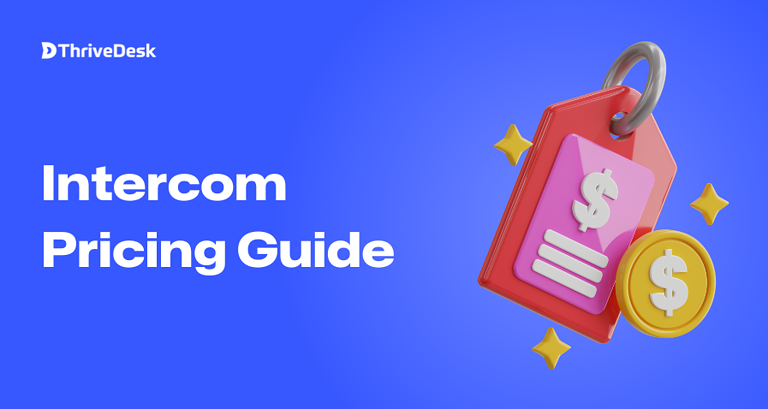To thrive in the competitive world of ecommerce, businesses must differentiate themselves to attract consumer interest.
The backbone of this visibility lies in effective search engine optimization (SEO) strategies tailored for online shops. With over 30% of all online traffic stemming from organic search, businesses can’t afford to overlook SEO.
Keyword research is not just a technical step; it’s fundamental to understanding customer needs and behaviors. By focusing on long-tail keywords and search intent, ecommerce websites can significantly enhance their chances of attracting the right audience.
Moreover, optimizing product and category pages will ensure shoppers find precisely what they’re looking for—swiftly and seamlessly.
This article will delve into the top seven SEO practices every ecommerce site should implement to unlock its full potential for success.
From content creation to technical elements and link-building strategies, equip your ecommerce business with the tools needed to thrive.
Table of Contents
The Importance of Keyword Research
Keyword research is the cornerstone of any successful ecommerce SEO strategy. It’s crucial to first identify and understand the search terms used by potential customers.
This helps in optimizing your website and content to improve search engine rankings and attract high-quality traffic.
A successful keyword strategy focuses on:
- High search volume and manageable keyword difficulty
- High conversion potential
- Relevant long-tail keywords
These factors all contribute to boosting organic traffic and customer engagement.
Additionally, keyword research informs various SEO efforts, like optimizing product and category pages. This extends to technical SEO tasks such as enhancing site architecture and URLs.
It’s not just about targeting high search volume keywords; understanding and meeting the needs of your target audience is crucial.
Here’s a simple structure for effective keyword research:
| Step | Action |
|---|---|
| Identify | Use keyword research tools to find relevant keywords. |
| Analyze | Check search volumes and keyword difficulty. |
| Prioritize | Select keywords with high conversion rates and relevance. |
Focusing on Long-Tail Keywords
Focusing on long-tail keywords can boost eCommerce SEO significantly. These specific phrases, like “best walking shoes for summer,” often have lower search volume.
However, they convert better than shorter terms, offering a valuable traffic source.
Utilizing keyword research tools such as Google Search Console and Ubersuggest is crucial. They help identify these long-tail keywords to enhance a site’s organic visibility.
| Tools for Finding Long-Tail Keywords |
|---|
| Google Search Console |
| Ubersuggest |
Long-tail keywords typically face less competition. This makes it easier for eCommerce sites with low domain authority to climb search engine rankings.
They also appeal to potential customers who are ready to make a purchase, leading to higher conversion rates.
Consider implementing a long-tail keyword strategy as part of your eCommerce SEO efforts. By targeting these keywords, businesses can better grasp customer intentions and meet their needs.
Benefits of Long-Tail Keywords
- Lower competition
- Higher conversion rates
- Better understanding of customer needs
Incorporate these tactics into your plan to see an improvement in user experience and search engine performance.
Understanding Search Intent
Understanding search intent is crucial for effective eCommerce SEO strategy. It refers to the purpose behind a user’s search query, guiding content to meet user expectations.
There are three primary types of keyword intent:
- Informational: Users seek to learn about a topic.
- Commercial: Users are exploring products and brand reviews.
- Transactional: Users aim to make a purchase.
To align your content with these intents, analyze Search Engine Results Pages (SERPs). Observe organic results and paid ads for insights into user goals.
Identifying search intent helps uncover content gaps and optimize for relevant keywords, boosting organic traffic and improving conversion rates.
Here’s a quick reference:
| Keyword Intent | User Goal | Example |
|---|---|---|
| Informational | Learn | “How to choose running shoes” |
| Commercial | Review | “Best running shoes 2023” |
| Transactional | Purchase | “Buy Nike running shoes online” |
Tailor your product descriptions and blog posts accordingly to enhance user experience and increase search engine rankings.
Optimizing Product and Category Pages
Optimizing product and category pages is crucial for boosting visibility on search engines. Start by using descriptive filenames and alt text for your product images.
This taps into Google Images, which accounts for over 20% of online searches.
Make sure to include primary keywords in the URLs of your category pages. This simple technique can improve search rankings, especially in competitive niches.
Your title tag (H1) should feature the keyword close to the beginning to clarify the page’s theme.
Embrace long-tail keywords like “best walking shoes for summer” to attract specific customer searches. This strategy can enhance organic traffic and boost conversion rates.
For product descriptions, optimize them alongside images and reviews. This approach not only attracts potential customers but also increases conversions.
Key Elements to Focus On:
- Image Optimization
- Descriptive filenames
- Alt text
- URL Structure
- Primary keywords
- Title Tags
- Keyword placement
- Long-Tail Keywords
- Specific search queries
Implementing these practices on your ecommerce site will make your SEO efforts more effective. Higher search engine rankings lead to more visibility and customer engagement.
Creating Unique Content for SEO
Creating unique content is crucial for improving your eCommerce site’s search engine rankings. Each page should feature original content, especially in product names and descriptions.
Highlight the key benefits and features of your products. Avoid using generic descriptions from manufacturers to prevent duplicate content, which can harm your SEO efforts.
Here’s a quick checklist to ensure your content is unique and effective:
- Original Descriptions: Craft product descriptions that are specific to your offerings.
- Target Keywords: Use relevant keywords wisely in your content to improve search engine visibility.
- Avoid Repetition: Ensure that you do not overuse keywords, which could lead to keyword stuffing.
Starting a company blog is another excellent strategy. It allows you to add fresh content to your site that is relevant and engaging.
This can improve your search engine rankings by showing search engines that your site is active and informative.
By regularly publishing high-quality, unique content, you can address customer needs and position your brand as an industry leader. This not only boosts your organic traffic but also enhances your overall eCommerce SEO strategy.
Leveraging Technical SEO Elements
Technical SEO is crucial for boosting an ecommerce site’s search engine rankings and user experience. Start with a well-structured sitemap. It guides search engines to crawl and index vital pages like product and category pages efficiently.
Next, focus on site architecture. Design it so users can find any product from the homepage in a few clicks. This improves navigation and makes the site more user-friendly.
Regular technical SEO audits are essential. They help spot and fix issues like duplicate content or orphan pages. This keeps your site running smoothly and maintains its performance.
Continuous monitoring is key. It prevents sudden drops in organic traffic and keeps your site optimized. Address any new issues as they arise.
The following table outlines common technical SEO tasks and their benefits:
| Task | Benefit |
|---|---|
| Sitemap optimization | Better crawling and indexing |
| Improved site architecture | Enhanced user experience and navigation |
| Regular audits | Quick identification of technical issues |
| Ongoing monitoring | Prevention of traffic declines |
By focusing on these elements, you can ensure your ecommerce site remains competitive in search engine rankings.
Effective Link-Building Strategies
Building quality backlinks is crucial for enhancing your site’s authority in the eyes of search engines like Google. Here are some effective link-building strategies:
- Create Valuable Content: Shareable content attracts backlinks from other websites in your industry, boosting your credibility.
- Guest Blogging: Write relevant content for other sites to access their audience and earn backlinks.
- Digital PR: Earn media mentions through a digital PR strategy to organically grow your backlink profile.
- Broken Link Building: Identify broken links on competitor sites and replace them with relevant content from your own site.
Using respected domains like .com, .gov, and .edu can further enhance your site’s recognition. Here’s a quick comparison:
| Strategy | Benefit |
|---|---|
| Valuable Content | Attracts industry links |
| Guest Blogging | Reaches host site’s audience |
| Digital PR | Grows profile with media mentions |
| Broken Link Building | Replaces competitor’s broken links |
Remember, quality trumps quantity. Focus on building meaningful connections to see a positive impact on your search engine rankings and draw potential customers to your site.
Integrating Content Marketing with SEO
Integrating content marketing with SEO is crucial for e-commerce success. Regularly posting content on your site can draw organic traffic, build customer trust, and improve rankings in search results.
Use long-tail keywords to gain a competitive edge, especially if your site has lower domain authority.
Engaging in content marketing boosts your SEO efforts and increases brand awareness. It also provides valuable opportunities for building backlinks.
User-generated content, such as reviews and testimonials, can enrich your product descriptions and enhance SEO effectiveness.
Crafting a detailed content calendar helps maintain consistency. It ensures your content resonates with your audience’s interests and needs, thereby improving engagement and SEO performance.
Here’s a simple strategy:
- Keyword Research: Use tools to find relevant keywords.
- Content Creation: Focus on high-quality content that answers search queries.
- Incorporate User-Generated Content: Utilize reviews and testimonials.
- Monitor Performance: Use analytics to refine your strategy.
By integrating these practices, you improve conversion rates and deliver a better user experience. Consider fixing broken links and avoiding duplicate content to maintain high search engine rankings.
Conclusion
In conclusion, implementing effective ecommerce SEO best practices is crucial for attracting organic traffic and increasing conversion rates.
An essential part of this is focusing on target keywords and relevant keywords to improve search engine rankings. Regular use of keyword research tools helps in discovering keyword ideas, including long-tail and informational keywords, which are often less competitive.
Improving user experience through clear product descriptions and effective internal links can enhance website navigation. Ensuring your product categories and blog posts are well-organized contributes positively to your overall SEO efforts.





